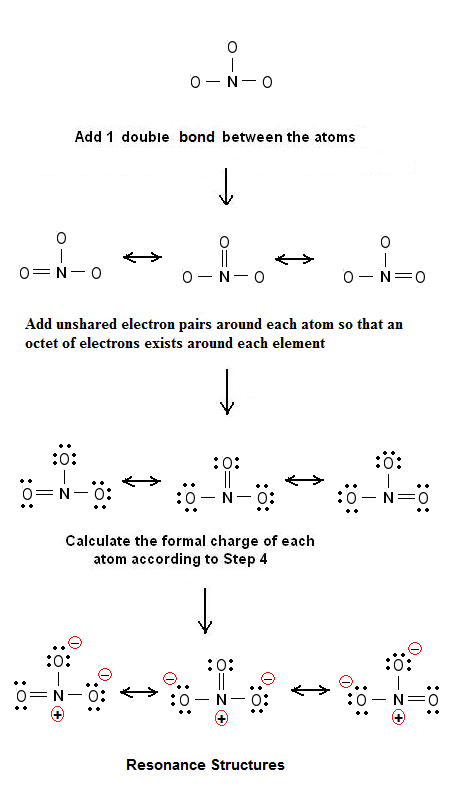
Our first attempt in drawing carbonate ion's lewis dot structure results in the structure as represented below. In baking, the carbon dioxide, which is released, will cause bread to rise and makes its texture lighter. The addition of acid to the carbonate ion causes the carbonic acid formation, which decomposes rapidly into carbon dioxide and water.

Resonance Structures of the Carbonate (CO 2 −3 ) IonĬarbonate ion is considered as a common polyatomic ion that is found in baking powder, baking soda, and limestone. The resonance hybrid of the ozone molecule holds a +1 charge associated with the oxygen at the centre and also a partial charge of -(½), which is associated with the other oxygen atoms. This resonance hybrid can be illustrated as follows. And, the net charge on the central atom remains as +1. If a resonance hybrid of the polyatomic molecule is drawn from the set of Lewis structures that is provided above, the partial charge present on every oxygen atom will be equal to -(⅔). The 3 possible resonance structures of NO 3 – can be illustrated as follows. The central nitrogen atom also holds a charge of +1, and the overall charge on the nitrate ion is given as -1. The oxygen atoms which are singly bonded to the nitrogen hold a charge of -1 (to satisfy the octet configuration). It is singly bonded to 2 oxygen atoms and doubly bonded to 1 oxygen atom. Nitrogen is considered to be the central atom in the nitrate ion. The bond length of the N-O bonds can be given as 125 pm. The resonance hybrid of the NO 2 – ion suggests that every oxygen atom holds a partial charge of magnitude with -½. Moreover, the resonance hybrid of this polyatomic ion, which is obtained from its various resonance structures, is used to explain the equal bond lengths, same as illustrated below. Whereas the Lewis dot structures of the NO 2 – ion highlight a difference in the 2 N-O bonds' bond order. In the case of nitrite ion, the bond lengths present in both nitrogen- oxygen bonds are equal. A formal charge is used to predict which resonance structures are most favoured.

Also, electrons' delocalization can be described through the fractional bonds (denoted by dotted lines) and the fractional charges present in a resonance hybrid.Īt times, the resonance structures are not equivalent, and it is essential to determine which one (s) describes the best actual bonding. The different structures of resonance of the carbonate ion (CO 3 2- ) can be illustrated above. To define resonance in chemistry, the bonding in specific ions or molecules by merging several contributory forms or structures, jointly known as resonance structures or canonical structures within the valence bonding theory, into a hybrid resonance (or the hybrid structure). In such cases, the structures of resonance can be used to describe chemical bonding. In most of the cases, a single Lewis structure has always failed to explain the bonding in either a polyatomic or molecule ion because of the presence of fractional bonds and partial charges in it. The transition metals have incompletely filled inner shells and in general, we cannot write Lewis structures for them.Resonance structures are the Lewis structure sets that describe the electron's delocalization in a molecule or a polyatomic ion. Do transition elements have Lewis dot structures?Ī Lewis dot symbol consists of the symbol of an element and one dot for each valence electron in an atom of the element.

Put any unused electrons on the central atom. Add electrons to all the noncentral atoms. Draw the simple structure (skeleton structure) of the compound by connecting everything with single bonds only. How do you draw Lewis dot structures?įollow these simple steps to correctly draw a Lewis dot structure: Add up the total number of valence electrons found in the entire compound. The reason is that electrons are shared in a covalent bond. Lewis structures can be made for molecules that contain covalent bonds and for coordination compounds. The purpose of drawing a Lewis dot structure is to identify the lone electron pairs in molecules to help determine chemical bond formation. A formula for the Lewis structure is given in the table below. The Lewis structure is determined from the sum of the numbers of hydrogen atoms, the number of carbon atoms, and the number of oxygen atoms. Frequently Asked Questions How is the Lewis dot structure determined?


 0 kommentar(er)
0 kommentar(er)
